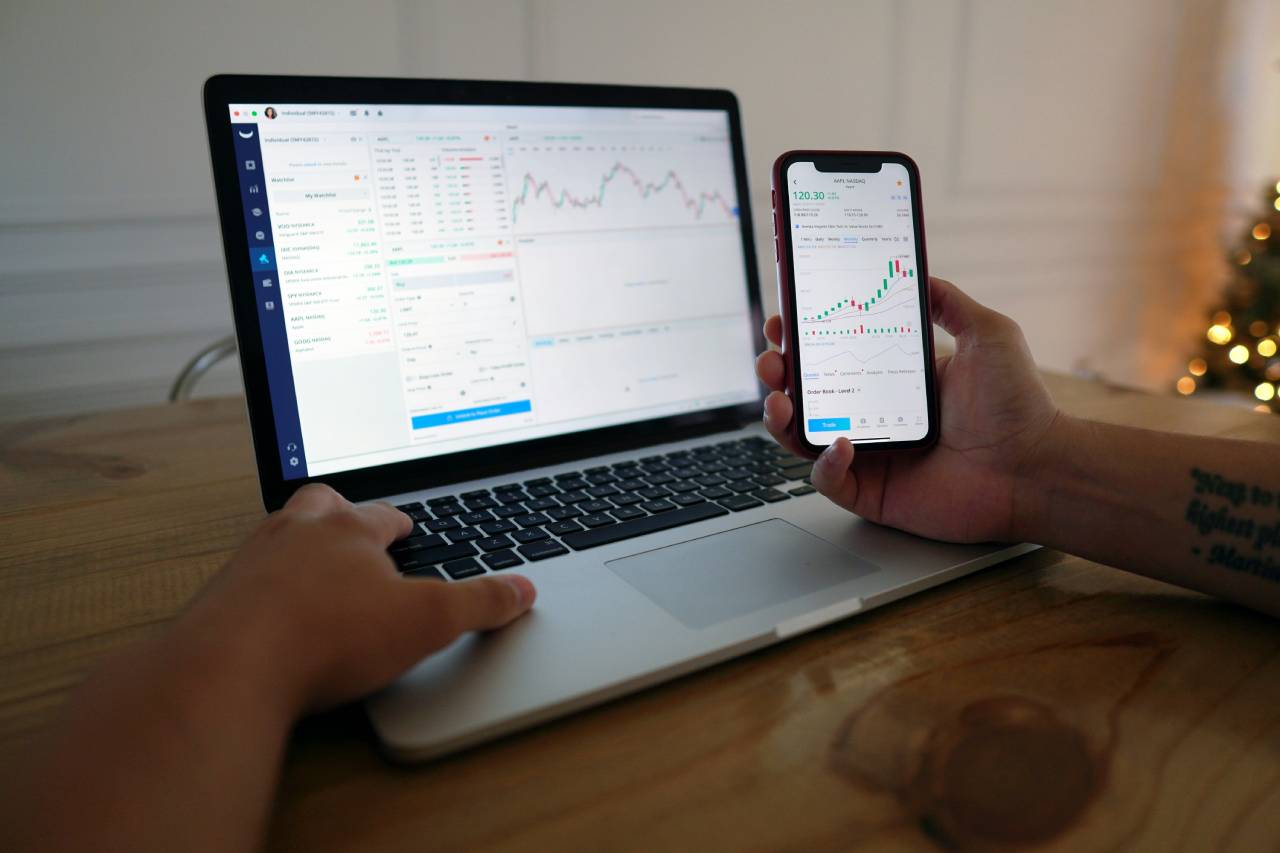Mobile or desktop trading are the top methods for engaging in stock trading, each with its own advantages. Knowing how they operate can help you choose which best suits your needs. In comparison, mobile trading implies flexibility that allows investments to be held from anywhere and anytime. On the other hand, desktop trading offers a comprehensive and detailed interface best suited for analysis and execution.
Ease of use, accessibility, and tools provided should all be considered when making this decision. Your choice may greatly influence your trading experience, so it is essential to choose the right one. This blog will discuss these two methods of trading, how each works, and which one suits you better.
What is Mobile Trading?
Mobile trading is trading financial assets using a mobile device such as a smartphone or tablet. Mobile trading apps have become quite popular in recent years, and they allow traders to buy and sell stocks, monitor their portfolios, and check market conditions anytime they want through their mobile devices. Since mobile banking has come into the picture, traders do not have to stay glued to their desktops to manage their investments.
These days, mobile trading apps are highly intuitive and user-friendly. They are equipped with features like real-time notifications, live market data, and advanced charting tools for more experienced traders. Mobile trading also simplifies managing a demat account, ensuring smooth transactions and portfolio monitoring on the go.
What is Desktop Trading?
Desktop trading, on the other hand, involves using desktop or laptop computers to trade stocks or other financial products. It is a traditional method that offers more potent tools than mobile trading applications. These tools include charting, research tools, technical analysis, and the ability to manage multiple accounts simultaneously.
Desktop trading is most suitable for serious traders who want to access all the trading tools available.
Key Differences Between Mobile and Desktop Trading
There are a few differences between mobile and desktop banking below:
1. Flexibility
Mobile trading’s most significant advantage trading is its flexibility. You can manage your portfolio on the go, when commuting to work, waiting for an appointment, or on vacation. Desktop trading binds you to your computer.
2. Tools and Capabilities
Desktop platforms outmatch mobile with advanced trading tools and customisation. Desktops provide pro-level tools the average buy-and-hold investor may never use.
3. Simplicity and Ease of Use
Mobile trading prioritises simplicity in its design interface and streamlined features. Desktop platforms have more windows, tabs, and charts, which can be initially tough for beginners but give experienced traders more control.
4. Screen Size and View
On a desktop platform, you can view multiple monitors. On a mobile device, you’re limited by the screen size, which restricts the amount of data you can view simultaneously.
5. Cost
Many brokerage mobile apps are free to download, while desktop platforms often require paid subscriptions to access the full functionality, market data, and advanced analysis tools.
6. Internet and Battery Dependency
Mobile trading relies heavily on a stable internet connection and battery life. If your phone runs out of charge or you lose signal, you may be unable to trade at a critical moment. With a wired internet connection and constant power, desktop trading offers more stability for uninterrupted trading.
Which One Should You Choose?
Choosing the right trading method is completely based on your preference. Each has its benefits, so it’s essential to consider what best suits your needs.
Select Mobile Trading if
If you enjoy convenience and mobility, mobile trading is the ideal choice. You can manage your investments through a smartphone or tablet from anywhere whatsoever, either on the way to the office, in traffic, or simply out of your office. This mobility ensures you never miss a chance to trade, no matter where you are.
Mobile trading is also appropriate for newbies or individuals who prefer not to deal with complex, difficult-to-use screens. Trading apps are largely preloaded with simple navigation, so making trades, observing the market move, and monitoring your portfolio become effortless endeavours and not a PC platform complexity.
Also, mobile trading is excellent for occasional traders or traders constantly. If you do not trade often and do not require in-depth market analysis, a mobile app provides everything you need to stay active with the market while having a leisurely experience.
Choose Desktop Trading if
If you need advanced charting and analysis capabilities, desktop trading is the optimal choice. Desktop platforms offer advanced features like technical indicators, advanced research tools, and multiple screens, which are ideal for traders who rely on advanced strategies. A desktop platform suits traders who often trade and require more accurate market data.
It provides real-time data, fast execution times, and user-configurable dashboards, facilitating improved performance and data-driven trading. Lastly, should you want a more sophisticated trading experience with multiple resources at your fingertips, trading on the desktop can provide a professional-grade experience.
Desktop platforms resonate with serious traders who need all the modern digital trading tools, including the ability to manage several accounts, algorithmic trading capabilities, and add-on research tools.
Which one Does Your Stock Broker Offer?
Most stock brokers in India these days provide mobile and desktop trading options to meet the needs of a broad range of traders. Mobile trading could be the way to go if you’re a beginner or like to trade informally. You can install a trading app on your smartphone and begin buying/selling immediately.
Alternatively, a desktop trading platform may be more suitable if you are an experienced trader and require advanced features. Most brokers also have a hybrid solution where you can use desktop and mobile trading solutions, so you can switch to whatever platform is most convenient to you at any time.
Conclusion
Trading with mobile devices involves flexibility and easy access, but trading on desktops involves functionality, depth, and a more substantial trading experience. Brokers make both options available to traders so that switching can be done quickly according to one’s needs.
Take time to see how you prefer trading, what tools you require for it, and how much time you can allot for managing your investments in different situations.





